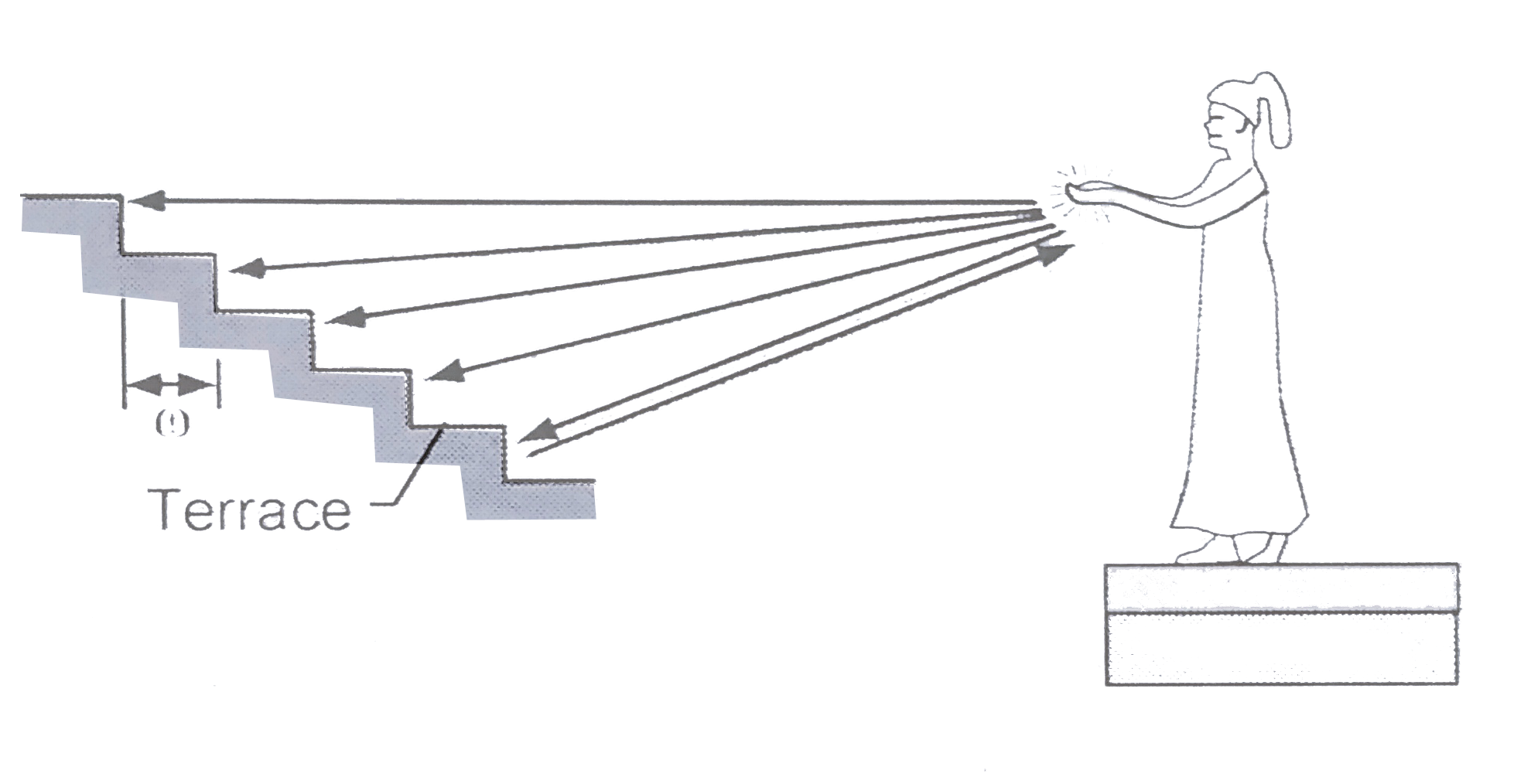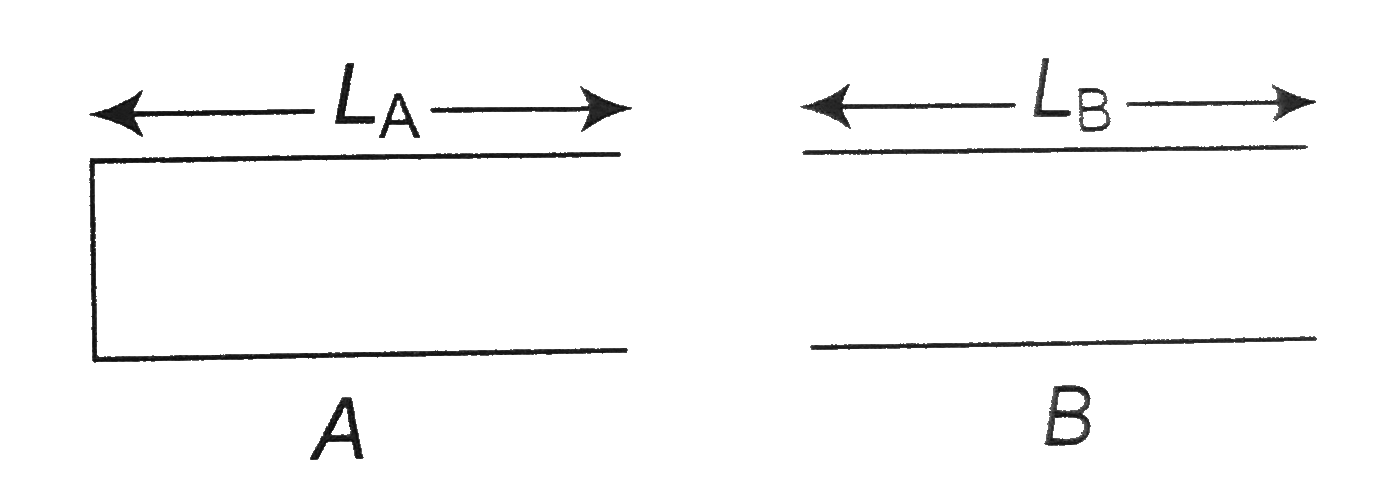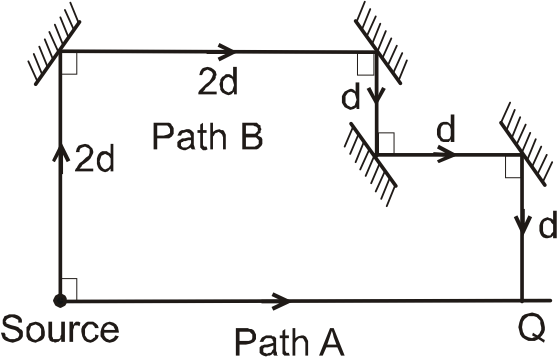SAMPLE PROBLEM from RESNICK AND HALLIDAY PHYSICS (HINGLISH) WAVE - II for Class 12
| Class 12 | PHYSICS |
| Chapter | WAVE - II |
| RESNICK AND HALLIDAY PHYSICS (HINGLISH) | SAMPLE PROBLEM |
| Medium | English |
| Academic Year | 2023-2024 |
Question 1
A handclap on stage in an amphitheater sends out sound waves that scatter from terraces of width w=0.75m (see figure). The sound returns to the stage as a periodic series of pulses, one from each terrace, the parade of pulses sound like a played note. Assuming that all the rays in Figure are horizontal, find the frequency at which the pulses return (that is, the frequency of the perceived note). Take the speed of sound to be 330m/s
 View Solution
View SolutionQuestion 2
The maximum pressure amplitude Δpm that the human ear can tolerate in loud sounds is about 28 Pa (which is very much less than the normal air pressure of about 105 Pa). What is the displacement amplitude smfor such a sound in air of density ρ=1.21kg/m3, at a frequency of 1000 Hz and a speed of 343 m/s?View SolutionQuestion 3
An electric spark jumps along a straight line of length L = 10 m, emitting a pulse of sound that travels radially outward from the spark. (The spark is said to be a line source of sound.) The power of this acoustic emission is P=1.6×104 W. (a) What is the intensity I of the sound when it reaches a distance r = 12 m from the spark? (b) At what time rate PA is sound energy intercepted by an acoustic detector of area Ad=2.0cm2?, aimed at the spark and located a distance r = 12 m from the spark? View SolutionQuestion 4
Many veteran rockers suffer from acute hearing damage because of the high sound levels they endured for years. Many rockers now wear special earplugs to protect their hearing during performances . If an earplug decreases the sound level of the sound waves by 20 dB, what is the ratio of the final intensity If of the waves to their initial intensity Ii ?View SolutionQuestion 5
Weak background noises from a room set up the fundamental standing wave in a cardboard tube of length L = 67.0 cm with two open ends. Assume that the speed of sound in the air within the tube is 343 m/s. (a) What frequency do you hear from the tube? (b) If you jam your ear against one end of the tube, what fundamental frequency do you hear from the tube?View SolutionQuestion 7
Pipe A is open at both ends and has length LA = 0.343 m. We want to place it near three other pipes in which standing waves have been set up, so that the sound can set up a standing wave in pipe A. Those other three pipes are each closed at one end and have lengths LB=0.500LA,LC=0.250LA and LD = 2.00L. For each of these three pipes, which of their harmonics can excite a harmonic in pipe A?View SolutionQuestion 9

The two pipes are submerged in sea water, arranged as shown in figure. Pipe A with length LA=1.5m and one open end, contains a small sound source that sets up the standing wave with the second lowest resonant frequency of that pipe. Sound from pipe A sets up resonance in pipe B, which has both ends open. The resonance is at the second lowest resonant frequency of pipe B. The length of the pipe B is View SolutionQuestion 10
In Fig. , two point sources S1 and S2 which are in phase and separated by distance D=1.5λ , emit identical sound waves of wavelength λ.
(a) What is the path length difference of the waves from S1 and S2 at point P1, which lies on the perpendicular bisector of distance D, at a distance greater than D from the sources ? (That is, what is the difference in the distance from source S1 to point P1 and the distance from source S2 to P1?) What type of interference occurs at P1 ?
(b) What are the path length difference and type of interference at point P2 in fig.
(c ) Figure shows a circle with a radius much greater than D, centered on the midpoint between sources S1 and S2. What is the number of points N around this circle at which the interference is fully constructive? (That is, at how many points do the waves arrive exactly in phase?) View SolutionQuestion 11
A sound source emits two sinusoidal sound waves, both of wavelength λ, along paths A and B as shown in figure.The sound travelling along path B is reflected from five surfaces as shown and then merges at point Q, producing minimum intensity at that point.The minimum value of d in terms of λ is :
 View Solution
View SolutionQuestion 12
When an emperor penguin returns from a search for food, how can it find its mate among the thousands of penguins huddled together for warmth in the harsh Antarctic weather? It is not by sight, because penguins all look alike, even to a penguin. The answer lies in the way penguins vocalize. Most birds vocalize by using only one side of their two-sided vocal organ, called the syrinx. Emperor penguins, however, vocalize by using both sides simultaneously. Each side sets up acoustic standing waves in the bird's throat and mouth, much like in a pipe with two open ends. Suppose that the frequency of the first harmonic produced by side A is fA1 = 432 Hz and the frequency of the first harmonic produced by side B is fB1 = 371 Hz. What is the beat frequency between those two first-harmonic frequencies and between the two second-harmonic frequencies?View SolutionQuestion 13
Bats navigate and search out prey by emitting, and then detecting reflections of, ultrasonic waves, which are sound waves with frequencies greater than can be heard by a human. Suppose a bat emits ultrasound at frequency fbe = 82.52 kHz while flying with velocity →vb=(9.00m/s)ˆi as it chases a moth that flies with velocity →vm=(8.00m/s)ˆi. What frequency does the moth detect? What frequency fmd does the bat detect in the returning echo from the moth?View SolutionQuestion 14
An engine is continuously emitting sound of frequency 1.2 kHz moving uniformly along a straight track. A stationary listener is situated off the track at a perpendicular distance of l = 350 m. The velocity of engine is equal to 50 m/s and the velocity of sound is 350 m/s. Find the frequency of sound received by the listener at the moment when the engine gets closest to him.View Solution
